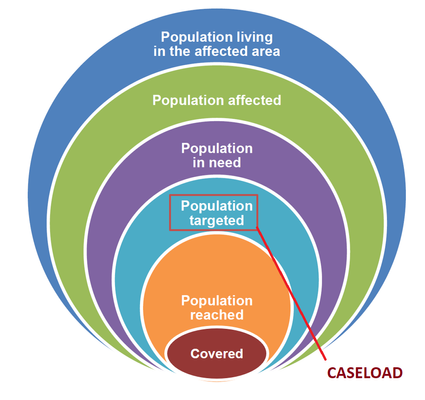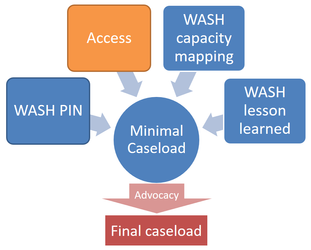

The cluster caseload represents the total number of people targeted by all partners of a cluster for the planned response. It should not be confused with the Population in Need (PIN), or the population reached or covered:
|
|
|---|---|
| Humanitarian Population Figures | How to calculate WASH Cluster caseload |
There is no consolidated cross-sector method to calculate a cluster caseload. OCHA often provides harmonized methodology at country level. The following approach can nevertheless be adapted and contextualized:
Rationale: The WASH humanitarian caseload is the part of WASH People in Need (PIN) that will be targeted considering operational constraints. Main constraints are access to target area (road access, security) and operational, technical and financial capacities of partners. If capacity was maximal and access not an issue, the whole population in need could be targeted, and the caseload would be the PIN. But as there are always constraints, the PIN must be reduced accordingly to obtain the minimal caseload, that can later be increased through advocacy. Use the following steps (refer to the diagram above):
Even if this figure seem unrealistic at first, an important gap between people in need and the people targeted by the response is morally not acceptable as per cluster principles, and the issue must be communicated to the wider audience in advocacy messages.